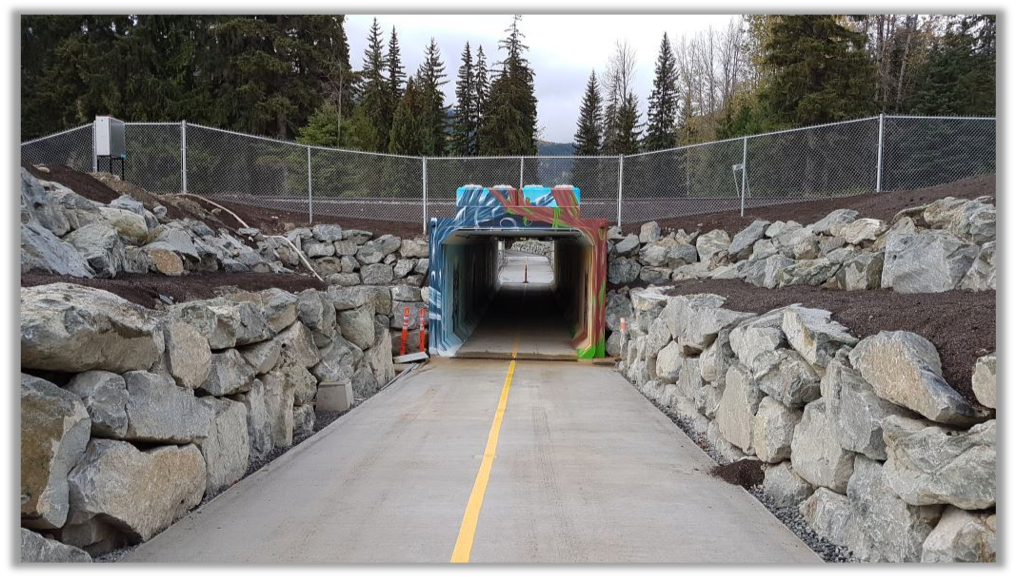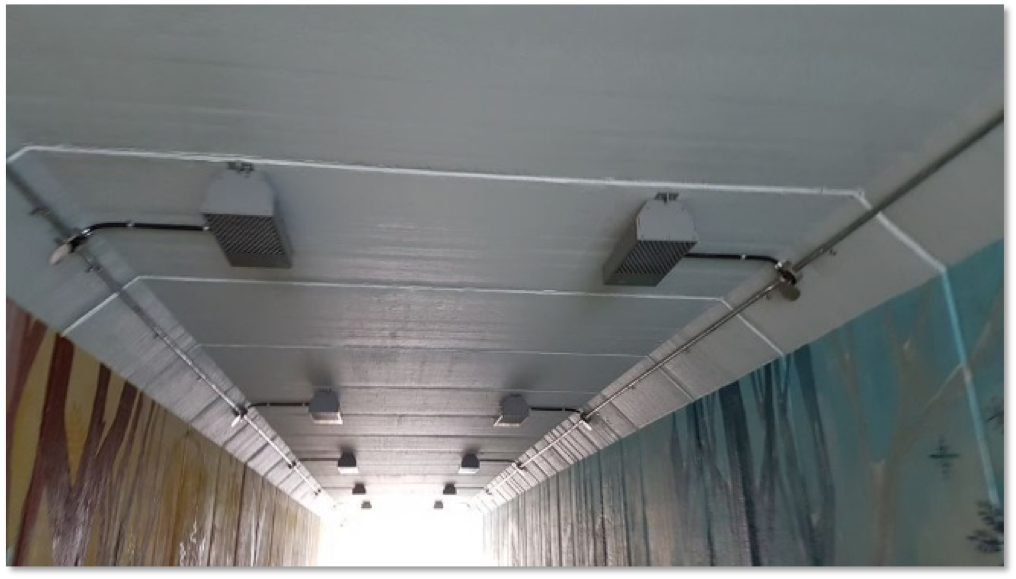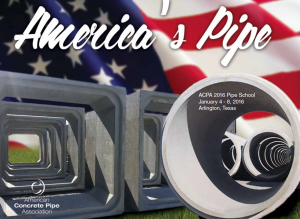On any construction project, time delays can lead to lost dollars. To avoid such problems, municipalities are finding innovative applications for precast, reinforced concrete pipe and box culverts.
Reinforced concrete pipe and box culverts offer speedy installation and immediate structural capacity and space. Precast concrete box structures allow the manufacturer to respond quickly to any type of order, large or small. Since manufacturing occurs in a controlled environment, weather doesn’t affect the production schedule. For these reasons, box culverts provide an ideal solution for many pedestrian underpasses.
The Need for Speed
Case in point is when the Resort Municipality of Whistler and developer Mons Holdings contracted Creus Engineering of North Vancouver to design a pedestrian crossing that would span two vital Canadian National (CN) rail lines at mile 77.41, known as Mons Crossing. The underpass was needed to provide safe and suitable year-round pedestrian and bicycle passage to home and business owners located north of the rail line to Whistler Village. The passage would be a continuation of the Valley Trail, the main pedestrian link in the Municipality of Whistler.
Although Creus and the developer initially considered a bridge overpass, an underpass constructed with reinforced concrete box culverts provided the quickest, most cost-efficient and reliable solution. The underpass design spanned the two active rail lines and specified 48 sections of 12- by 10-foot precast boxes, weighing approximately 33,000 pounds each. The total span measured 33.3 yards.
CN Rail required a very limited 15-hour construction window, due to the two active rail lines. Other unique challenges included poor soils, a seasonally high water-table, pedestrian traffic and a broad range of weather conditions seen in this mountain resort.

Fast, Reliable Manufacturing
To fulfill the need for a speedy turnaround, The Langley Concrete Group manufactured the box sections at their Chilliwack facility, utilizing dry-cast production technology. A dry-cast concrete mixture combined with high amplitude vibration compaction produces a dense, resilient product with excellent strength and inherent freeze-thaw resistance. This fast manufacturing process can produce up to 15 box sections in one shift. The box sections are then steam cured and held for a minimum of seven days, allowing verification of design strengths.
Even with the accelerated construction deadline, the project’s design met and addressed all standards including ASTM 1433, ASHTTO, CSA and AREMA E90. During the project, Langley Concrete Groups’ quality control department oversaw all aspects of the box manufacturing, including reinforcement, mix design, production process, curing, post-production and loading. Langley’s quality assurance team monitored and verified all precast products produced at the company’s Q Cast Certified Chilliwack plant daily.
The Hamilton Kent Super- Seal Gasket saved time in creating watertight box joint connections. This durable self-lubricated gasket can seal joints to at least 5 psi. All gaskets were installed at the plant, reducing field preparation and installation time. In addition, DWIDAG threaded rods in each corner of the box structures provided post-tensioning of the box assembly. This met CN Rail’s requirement to ensure movement was restricted under the forces of the train loading, combined with the shallow cover on top of the box structure.
For the final step, Langley Concrete provided a JB Pipe Puller, a hydraulic puller capable of 25-ton pulling force, which assisted “homing” the joints without creating unnecessary damage or pinching of the gaskets. Once the boxes are set in the proper position, the puller pulls the joint home without requiring heavy equipment to push on or lever the box sections.
CN Rail closed both tracks for 15 hours for the contractor to excavate, place suitable bedding soils, compact, place box sections, backfill and reinstall both rail lines ― a significant amount of work for a short period of time. The installation was completed and ready for the active train crossing in 12 hours, hours ahead of schedule.
Precast reinforced concrete box culverts provided a fast, highly efficient, cost-effective structural solution for Whistler and the developer. Additionally, the culvert was fitted with drainage (surface and subsurface) to allow year-round use and lighting to allow 24-hour use. What’s more, the box culvert offered a backdrop for a creative end treatment. At project completion, a local artist painted the underpass for an aesthetically pleasing appearance.



